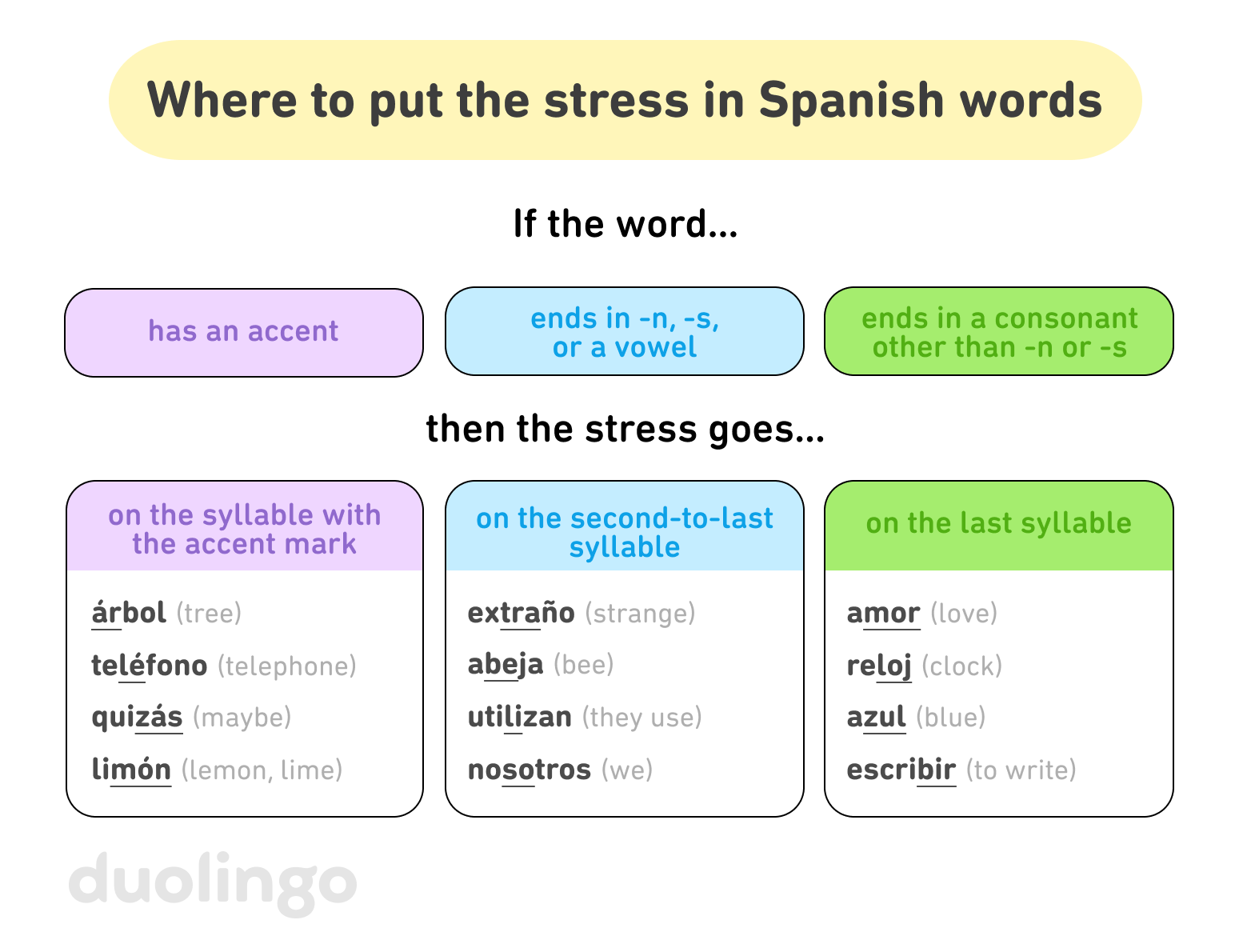Accent marks are really helpful for Spanish learners—they might be a pain to remember, but they tell you how to pronounce a word and they even help you tell words apart! Here are the 3 ways you’ll use accent marks in Spanish.
1. Spanish accent marks show you what to stress
In Spanish, accent marks tell you which part of the word will be said with the most emphasis, a bit louder and longer than the rest of the word. Accent marks only appear above vowels, as in á, é, í, ó, and ú. The vowels themselves are pronounced the same, whether they have an accent or not, but the accents let you know where the stress is!
Here are some examples:
- el sofá(the couch) is pronounced with the stress on “fá” (in English, we put the stress on “so”—the opposite of Spanish!)
- el teléfono(the phone) is pronounced with the stress on “lé”
- la panadería(the bakery) is pronounced with the stress on “rí”
- la decisión(the decision) is pronounced with the stress on “sión”
- útil(useful) is pronounced with the stress on “ú”
2. Spanish accent marks help you tell words apart
Accent marks are also used in Spanish to distinguish some words that are spelled the same but have different meanings. Usually these words are really short—just one or two syllables—and the accent lets you know which word is meant. Here are the most common examples:
| With an accent | Meaning | Without an accent | Meaning |
|---|---|---|---|
| mí | used after a preposition to mean me, like in para mí (for me) | mi | my, like in mi casa (my house) |
| tú | you, like in tú estás aquí (you are here) | tu | your, like in tu casa (your house) |
| él | he, like in él está aquí (he is here) | el | the for masculine nouns, like in el libro (the book) |
| sé | I know, like in yo sé la respuesta (I know the answer) | se | variations of oneself, like in ella se cuida (she takes care of herself) |
| qué | what as a question word, like in ¿Qué quieres hacer? (What do you want to do?) | que | that to connect two sentences, like in sé que estás aquí (I know that you’re here) |
In fact, qué isn’t the only question word with an accent mark—all question words in Spanish have accent marks! And they also all have versions without a written accent when they aren’t used as a question. For example:
- ¿Dónde está tu libro favorito?(Where is your favorite book?) vs.Es la calle donde nos conocimos.(It’s the street where we met.)
- ¿Cuándo vamos a la fiesta?(When are we going to the party?) vs.Te conocí cuando viniste a México.(I met you when you came to Mexico.)
3. Spanish accent marks separate letters from numbers
Occasionally you’ll see the letter o surrounded by numbers, and to help make it clear that it’s a letter (and not the number 0) it will be written with an accent mark. For example, Mi perro tiene 3 ó 4 años (My dog is 3 or 4 years old) has an accent on the ó to make it clear that my dog isn’t 304 years old!
Why don’t all Spanish words have accents?
Even though all Spanish words have stress on one part or another, not all of them have accent marks! In Spanish, there are a few rules about which syllable, or part of a word, is stressed, and if a word is an exception to a rule, it gets an accent mark.
Use these rules as a pronunciation cheat sheet:

For more tips and tricks about Spanish, check out all our learning posts, including our post about Spanish pronunciation!
